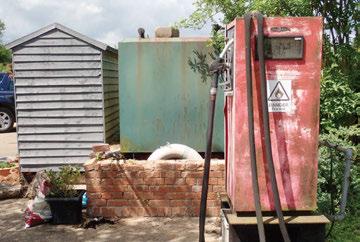restoration HUB:
Actions and Achievements
T
wo years ago we launched a five-year plan, part of which presented ‘restoring’ as one of four key strands of our work. As we come to the close of the second year of our objectives and to the final quarter of our twoyear Historic England National Capacity Building grant, we review where we are and share plans with members about what’s coming up next for restoration.
Hub foundations
IWA’s Restoration Hub was established before the announcement of the five-year plan. The Hub seeks to champion, enable and support the restoration movement, and its direction is focused by the Hub’s strategic advisory team known as the High Level Panel. The team is made up of influential and experienced leaders of the restoration movement who meet to consider the key issues facing the sector. Their latest thinking is summarised in the graphic [right] and can be boiled down to a small number of core areas: funding, leadership, stakeholders and legislation, and finally resources, which includes volunteers, their skills and training. These areas have become the basis of the Restoration Hub’s plans and the foundation for our five-year objectives.
Raising awareness The five-year plan looked towards the creation of an exciting, vibrant and robust restoration sector that can deliver successes as well as reopenings. To support this aim, IWA will continue to build its reputation as the go-to provider of knowledge, advice and resources for waterway restoration projects. In fact, the last few years have seen some significant reopenings, such as Lock 15 on the Grantham Canal and Phase 1a of the Cotswold Canals, and these certainly go some way to delivering excitement in the sector. However, it’s important to remember that all of these are significant, long-term, often multi-million pound construction projects, which in many cases operate without broader public recognition or support. IWA is ideally placed to raise awareness of the sector overall and to access specific audiences, such as national government, local
issues facing restoration resources Succession Planning
knowledge
funding
Issues: • Recruiting volunteers at all levels • Finding the right people for the right projects
Issue: • How to share best practice across a national movement
Issues: • How do restoration groups secure adequate funding to deliver their projects • Post-Brexit heritage funding may be affected
one voice skills
champion restoration
Issue: • Developing volunteer competency and expanding the sector’s skill base
Issue: • How to gain high level political visibility as well as recognition and support from the public
strategic Planning & priorities Issues: • A finite set of resources needs to be used for maximum benefit • How does a fragmented sector respond to national issues
stakeholders & legislation environment
Heritage & Planning
working in partnership
Issues: • Demonstrating environmental benefits of restoration • Environmental rules and regulations challenge to navigate, creating barriers to progress
Issues: • Limited understanding of waterways heritage • Route security of derelict canals threatened by developers and local authorities ignoring local plan
Issue: • Ineffective relationships with important stakeholders
authorities, a greater diversity of volunteers and national media, to bring new attention and support to the work of the movement. In the last year we have secured coverage for restoration on BBC’s Country File as well as in national newspapers such as the Observer and Guardian.
Training and skills-sharing Site health and safety has been an area where IWA has invested considerable resources to provide a lead to restoration groups. One of the largest investments has been in the recruitment of the Hub’s technical officer, who provides technical support to restoration groups on project planning, risk assessment and method statements. Since the five-year plan was published the restoration team has worked on three core health and safety tuition videos: Creating a Culture of Safety, Construction, Design & Management Regulations 2015, and Project Planning. They have been shared with restoration volunteers and video training has been supplemented by workshops on technical topics such as working at height and temporary works. This type of training aims to lift the skill and knowledge base of volunteers across the sector. The technical officer takes his skills and advice direct to restoration sites to provide technical support and knowledge-sharing in situ. Recently they have also been invited to undertake independent health and safety audits for several restoration groups to identify gaps in paperwork and propose an improvement plan. Meanwhile, restoration volunteers have been given the opportunity to attend site supervisors safety and first aid training schemes, run by external trainers and organised by IWA’s restoration team. Training volunteers on plant and machinery allows restoration groups to become selfsufficient.
The Restoration Group has produced health and safety videos to supplement their onthe-ground training courses. Learning bricklaying on a WRG training weekend.
30
| IWA Waterways
030 hub strategy AH.indd 30
Winter 2019 23/10/2019 14:17









